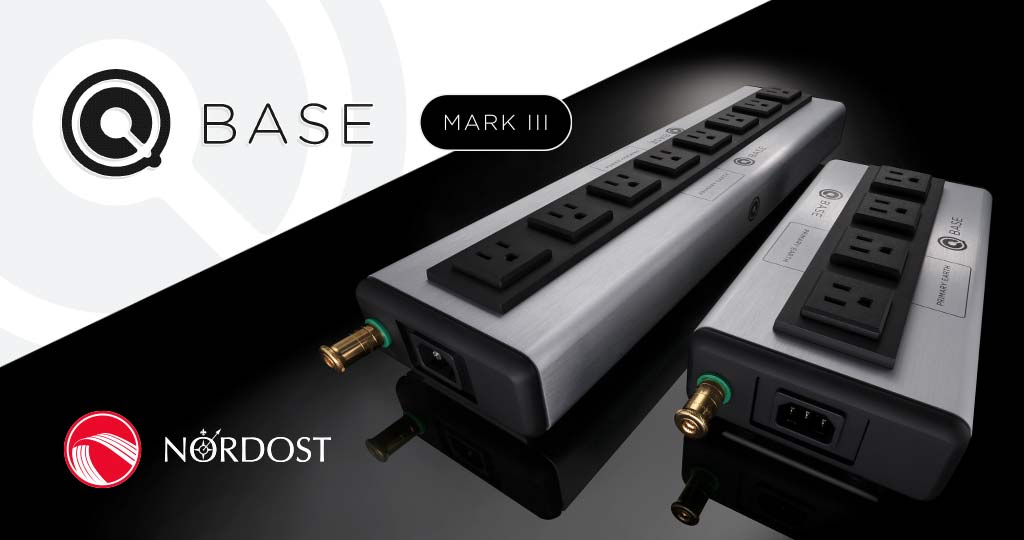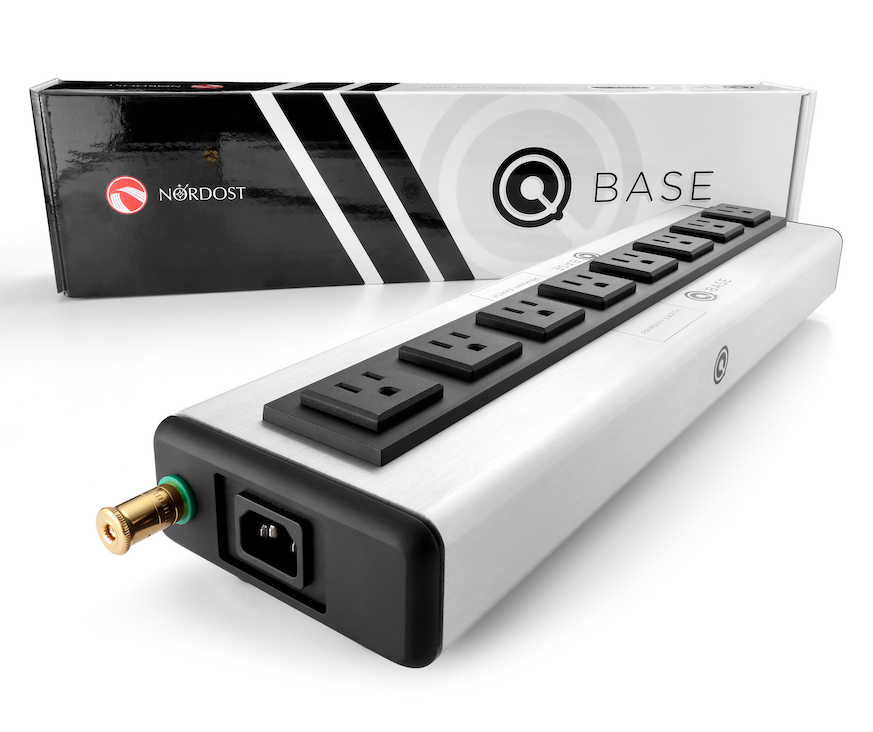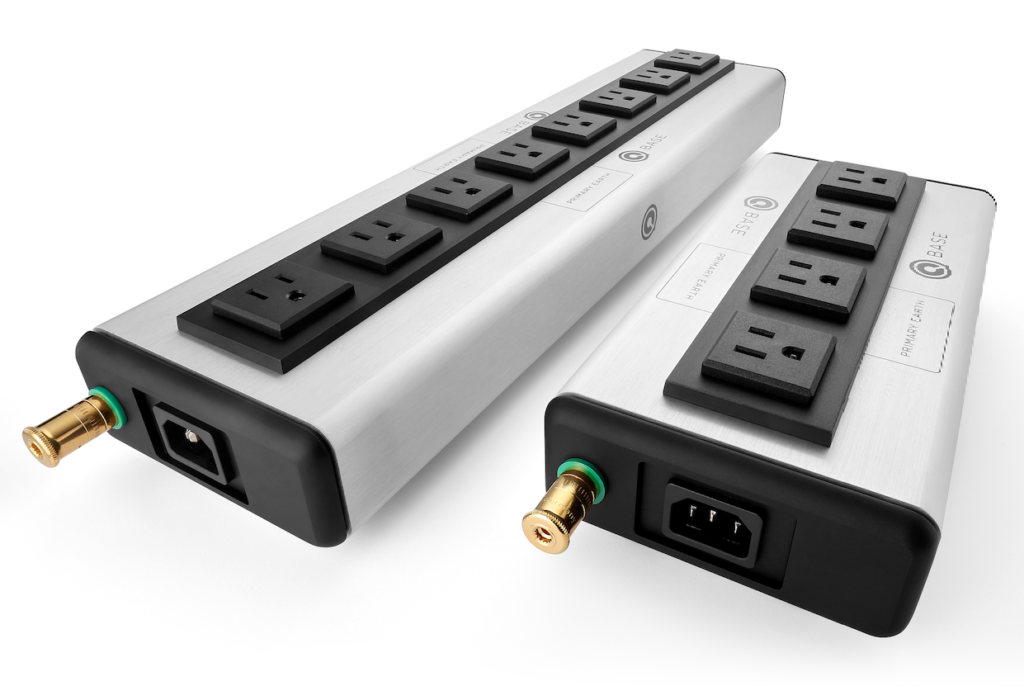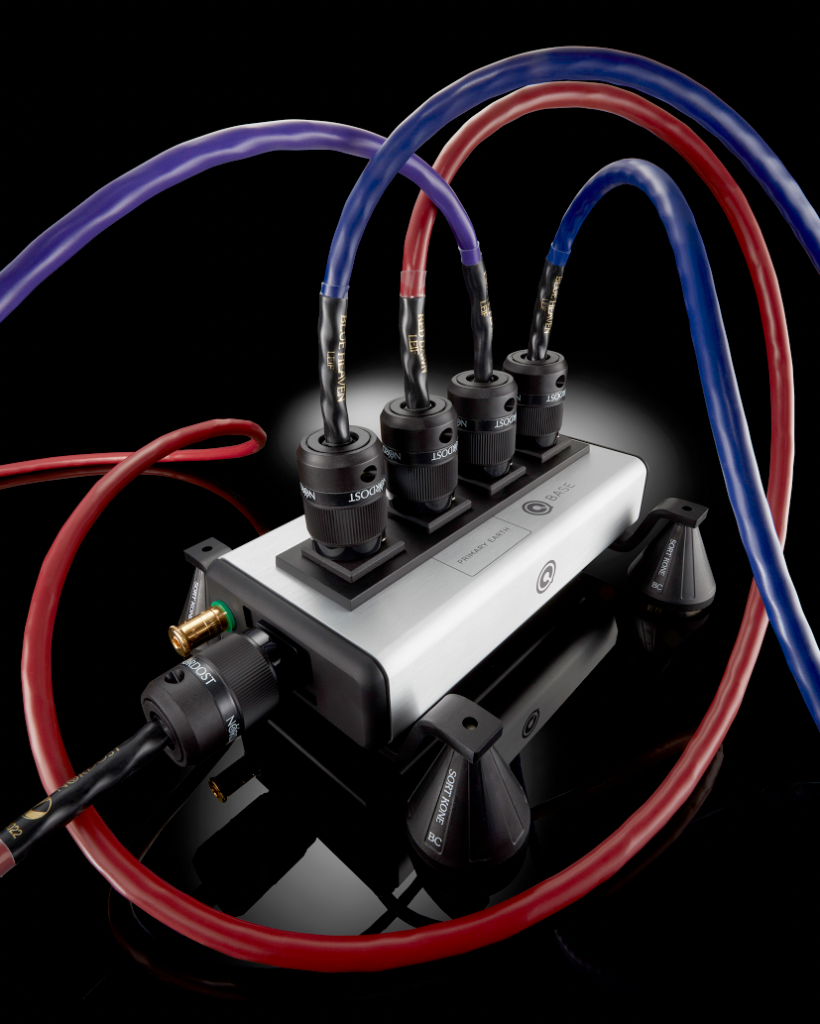
We are excited to introduce the new QBASE Mark III. Since first being introduced to the market in 2009, the QBASE has been a sophisticated, yet straightforward AC Distribution Unit which provides the solid foundation audio components require, in order to improve upon any high-performing, two-channel system. Now, we are further amplifying the benefits that the QBASE brings to a system’s performance with the launch of the QBASE Mark III.

At its core, the QBASE will remain true to its historically praised design and concept with its mechanically tuned, extruded aluminum body, durable contact points, and internal MonoFilament wiring. Much like its predecessors, the QBASE Mark III addresses the noise-inducing, conflicting flows of signal and ground paths within a hifi system by using a unique method called “star-earth topology”. Star-earth topology connects all outlets from one central point (or outlet) to the input. In the QBASE, we do this while additionally lifting the impedance level on every outlet, except for the one deemed “Primary Earth”. Elevating the ground in this passive manner achieves three indispensable effects: it creates an uninterrupted, straightline AC distribution path from the wall to each individual component, isolates each component by deterring the ground flow between them, and eliminates conflicting flow between signal and ground paths all without any form of inline filtering or active circuitry.

Nordost’s QBASE Mark III is a significant upgrade compared to its previous iteration. Improvements include:
- Newly designed, dual PC-board configuration
- Increased separation of all ground connections from the line and neutral traces
- Further minimized interference/ crosstalk between live/neutral and ground currents
- Enhanced trace sizes to maximize current flow
- Revised resistance “sink” to add protection and effectively damp eddy currents
Nordost’s QBASE Distribution Unit has been an essential component in hifi systems ranging from modest to reference-level for well over a decade. Now, with the crucial developments implemented in the design of the new QBASE Mark III, the benefit it brings to system performance has only been amplified. The QBASE Mark III impacts every component connected to it, improving each component in unique ways. The cumulative effect it has on a system is all encompassing— enhancing the 3D imaging on the soundstage, pulling out tonal richness and sustained decay time in the music, and imparting a clear increase of power while maintaining a neutral and effortless delivery of the performance.

Available QBASE Mark III Models:
QB8 – Eight Outlet
| US (NEMA), EU (Schuko), or AUS |
| IEC C-14 (15/10Amp) or IEC C-20 (20/16Amp) |
QB4 – Four Outlet
| US (NEMA), EU (Schuko), or AUS |
| IEC C-14 (15/10Amp) |
QB6 – Six Outlet
| UK |
| IEC C-14 (13Amp) or IEC C-20 (16Amp) |

Does the new QBSE III benefit/improve from extended burn-in time in the same way your cables do?
Absolutely! Not only does the cabling within the QBASE benefit from burn-in, but so do the traces and connectors.
Within the first week you will hear clear improvements. Although, after that you will reach the point of diminishing returns.
The new QB4III sounds exceptional in my system . Congratulations on an amazing product .
Apart from the fact that the larger QB8 can accommodate more QRT plug-ins – is , or was there a difference in performance between the QB8 and the QB4 ? I believe I had read somewhere or was told that there was difference with the old MKII versions ?
Roy Gregory says as much in his latest review of the MKIII – when he refers to his experience with the previous MKII . If there was a disparity in performance between the previous QB8 & QB4 MKII’s has this been corrected with the new MKIII versions ? Thanks
Thank you for your message! There is no performance difference between the QB4 MKIII and the QB8 MKIII from a circuit perspective, nor did one exist between the MKII models. The only difference that exists between QB4 and QB8 models is the unit size, which does have an influence on how the units resonate. The larger dimensions of the QB8 allows it to resonate in a more broad-banded perspective, which audibly translates to a bit smoother result. The same thing happens with cable lengths.
The only other difference is that in the MKII versions, 20 Amp options were only available in the QB8. Now, you can get a 20 Amp in a QB4 as well as a QB8. If you were evaluating a QB4 (15 Amp) to a QB8 (20 Amp), there would be a noticeable difference.
So from what you’re are saying in your response to my question is that there actually is a difference in performance between the QB8 and QB4 .
As you said – due to its larger size the QB8 with its “broader band perspective” offers a smoother presentation in comparison to the QB4 .
In his review of the QB8 Roy Gregory also seems to feel that the larger QB8 performs better then the QB4
Unfortunately for me the QB8 was beyond my budget so I had to settle for the QB4 . Nevertheless the smaller QB4 still sounds great .
Thanks